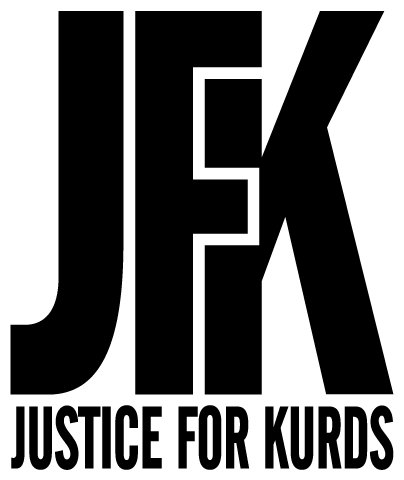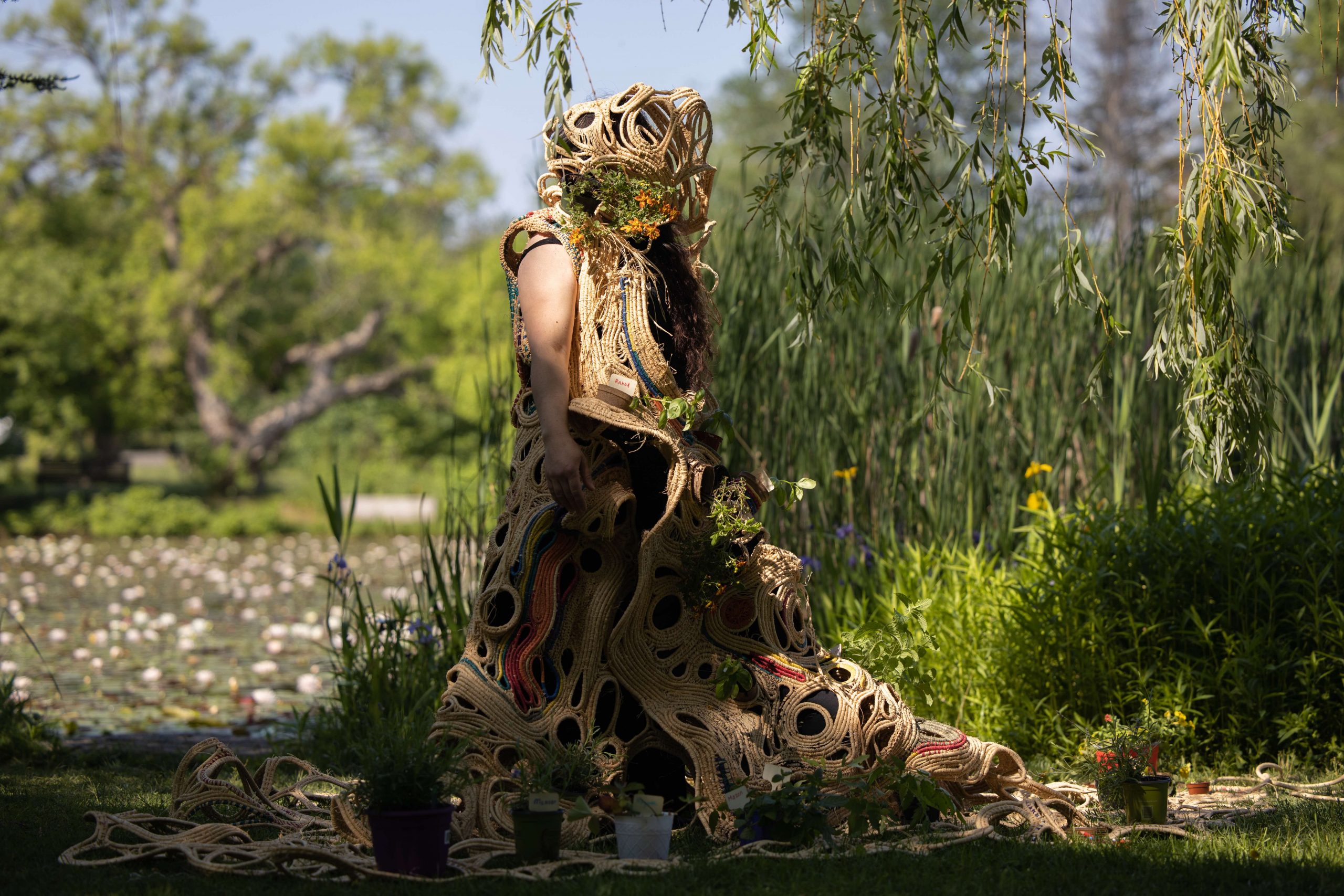Q: To start off, could you present who you are, where you come from, and what you do?
A: My name is Khadija Baker. I am from Amuda, Northern Syria. It is a small town on the Turkish border, and it is very close to the Iraqi border. I got my education there, then went to university in Damascus. In 2001, I moved to Canada. Since then, I have been practising art here.
I started practicing art by collecting stories. I wanted to share voices of people we don’t hear often in art. My first project was a way to reimagine the map based on daily real life. In Syria, I wasn’t able to work in any government job because of my identity. I wasn’t involved in politics. We were ignored and excluded; it’s like we were not seen. The first time I heard about the Kurds on TV was probably around 2004. With my art, I wanted to change that, to show that we exist. So first my first project, I interviewed stateless Kurds their stories were the background of imagainded map and integrated into my installation. I superimposed the Kurdish names of villages with the Arab names that had replaced them.
From that project, I started doing more interviews, more work based on real stories. Now, I find that my work involves oral history expressed in the form of visual arts. With every new artwork, I find myself talking about injustice. For me, art is about politics, a kind of resistance – even if it is entraining. Any work that goes outside your personal space becomes part of the public space. For me, art has to be useful. That is how I would summarize my work.
Talk Silently, 2016/ Live performance & video projection. sharing stories and names with community gathering with Syrian & local open conversation and to create un understanding about the newly arrived displaced.
Q: When did you start practicing art?
A: It was impossible to be an artist in Syria with what I do. Even taking photos there is complicated. So I started practicing my art when I was in Canada. But I always take inspiration from my personal experience, but to open universal conversation . I worked with empathy of what is going on there, and a lot of emotion. But it did not work for me, I don’t I want the viewers of my work to feel heavy-hearted all the time that’s why I see that my art creates witnessing and understanding. I think that if art is too sad, viewers might feel discouraged and might not want to keep looking. That is why I have a strong focus on the visual aspects of my work. I try to concentrate on brief stories and then I create a way of witnessing and understanding the reality I am part of – whether in Canada or in Syria.
Q: What is your source of inspiration when creating an art piece? Is it more about the people’s stories you are showing, or about the visual aspect?
A: The visual pleasure is just to make the story easier for me. My focus is the stories. For example, I immersed myself with Yazidi women for a year and a half to talk about the injustices they faced. It is only once I had collected these stories that I started to think about the way I would share their stories and connect it to the use of women body: the design, the materials, the technique… For me, these details come naturally once I have the right way to tell the stories.
Q: What projects are you working on, or have worked on, that you find particularly noteworthy?
A: I have heard many stories about loss and injustice, displacement and the history of violence. The loss of a family member, a memory left behind, the loss of language. When you are displaced, you leave everything behind and only carry your body and your memory. I was touched by all these stories, so I created a performance project about them: I wrote them out and made texts out of them. Then, I read the texts – which are reflections of these stories – aloud to an audience. Sitting in a public space, offering the story for the public to hear, I was sharing this memory of which I was the passive embodiment. It is a beautiful way of sharing. I have been doing this for more than 12 years. Every time is different, and the reactions of participants is always unique. Then, their reaction becomes the new avenue through which this memory lives on. A new shared memory.
my little voice can’t lie. Performance and sound video, Biennale of Sydney, Cockatoo Island, Australia, 2012
Q: Do you speak with the audience to get their reactions?
A: It’s mostly through eye contact. Some people will hug me or tap me on the shoulder. It’s like they want to confirm to me that they get it. And for me, as a woman, it’s hard to let a stranger touch you. So the aspect of touching as well was confirming my existence as a woman and breaking this for the sake of the story to be shared.
I have also done other works related to that. I have worked with my hair. Scientificly, hair says a lot about a person, what they have been through who they are. It reflects emotion and experience. I did an animation with hair where I drew using my hair like you would with sand. I told the story of chemical attack in Syria, and my intense memory of seeing footage about it on TV. The crops were burnt that year because of the attacks – there was toxic rain destroying them. The memory of this was so strong that it made sense to use a part of me to express it.
Performing community garden, 2019. Live performance, plants, hand made paper.
Q: Who is your target audience?
A: I don’t have a particular audience in mind with my work. I think a lot of us share similar stories. For example, here in Canada, there was violence made upon the Aboriginal people which I can relate to. I have shown my work in multiple countries, and it is usually well received. People are open to different viewpoints. There is also a lot of work to be done to let Kurdish people express themselves on their own land. If we don’t let artists express themselves in public, then that is reflective of how daily life can be difficult for everyone. We must start by giving the Kurdish people a voice. That is also what my art tries to achieve.
Find out more about Khadija Baker and her art from her website: https://khadijabaker.com/home.html

